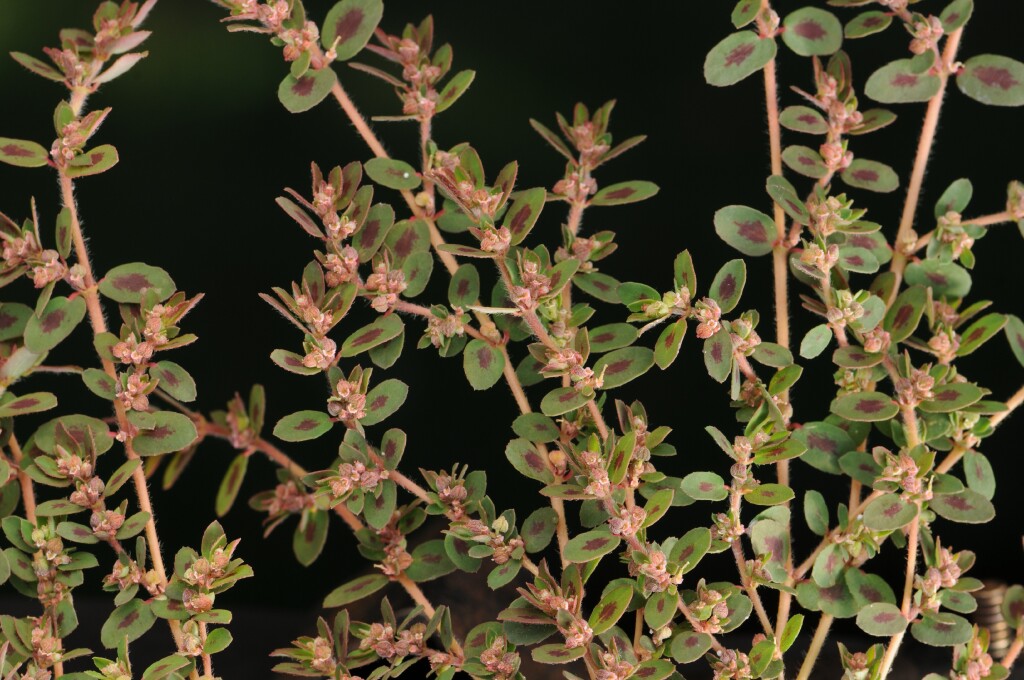Euphorbia maculata
L. EyebaneProstrate to ascending annual herb, pubescent; stems to c. 45 cm long, branched, often reddish. Leaves opposite, ovate-oblong to oblong, mostly 2–13 mm long, 0.5–4 mm wide, apex obtuse or subacute, base obliquely truncate, margins minutely serrate to entire, upper surface sparsely pubescent, lower surface more densely pubescent, often bearing a central purplish blotch and tinted with red; petioles 0.5–2 mm long; stipules triangular-subulate, to c. 1 mm long. Cyathia usually few, in uppermost axils or terminal on short branchlets; peduncles to c. 1 mm long; involucre conical, to c. 1 mm long; glands lunate, c. 0.2 mm long, with 3-lobed purplish appendages; female flowers with styles shortly bilobed. Capsule subglobose, 1–1.5 mm long and wide, keeled, smooth, pubescent to glabrescent; seeds more or less ovoid, c. 1 mm long, reticulate, apiculate, white, grey or brownish, caruncle absent. Flowers summer and autumn.
MuM, VVP, VRiv, MuF, GipP, Gold, CVU, EGL, HSF, HNF, OtR. Also naturalised WA, NT, SA, Qld, NSW, ACT. Native to North America. A garden weed often found growing in lawns, cracks of paths and on bare ground.
Jeanes, J.A. (1999). Euphorbiaceae. In: Walsh, N.G.; Entwisle, T.J., Flora of Victoria Vol. 4, Cornaceae to Asteraceae, pp. 55–82. Inkata Press, Melbourne.
 Spinning
Spinning




